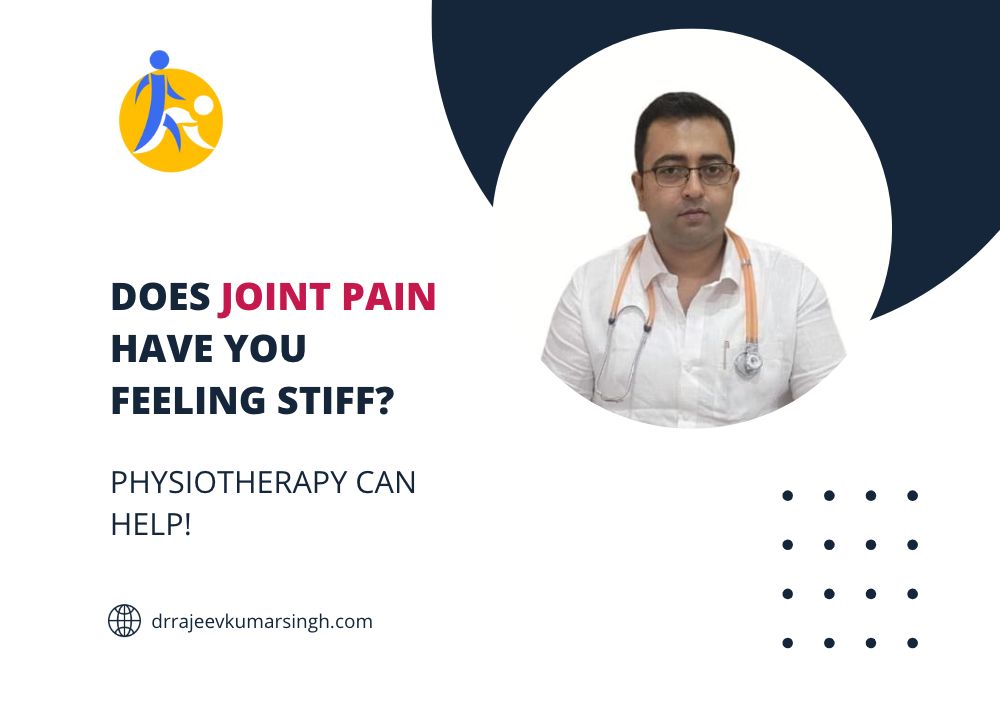Do you suffer from joint pain that have you feeling stiff and uncomfortable? You’re not alone. Many people experience joint pain and it can be caused by a wide range of issues. Fortunately, physiotherapy can help. Physiotherapy is a great way to manage joint pain and help you get back to feeling your best. In this blog post, we will discuss how physiotherapy can help relieve joint pain.
Introduction: What is joint pain and what causes it?
Joint pain, also known as arthralgia, is a feeling of intense discomfort around a joint and can range from mild to severe. It is usually accompanied by redness, swelling, tenderness and warmth around the joint, as well as possible joint deformity. According to Dr. Rajeev Kumar Singh Patna at Sai Health Care Wellness Centre, joint pain can be caused by a variety of different factors, including but not limited to injury, trauma, age-related wear and tear, disease and infection. The type of treatment and relief depends on the cause of the pain, which should be properly diagnosed by a medical professional.
How does physiotherapy help with joint pain?
Joint pain is an uncomfortable and often debilitating condition that can be difficult to manage. Fortunately, there are treatments available to help reduce the symptoms associated with joint pain. One of the most effective treatments for joint pain is physiotherapy, which involves a range of exercises and techniques to help improve joint flexibility, strength, and overall well-being.
Physiotherapy helps with joint pain in several ways. To start with, physiotherapists can assess the individual’s posture, movements, and alignment to identify any imbalances or weaknesses that may be contributing to joint pain. They can then provide specific exercises to address these imbalances, helping to reduce stress on the joint and improve its functioning.
Furthermore, physiotherapists can help to diagnose the source of joint pain by examining tenderness and warmth around the joint, as well as any joint deformity. This can help to identify any underlying conditions that may need treatment, such as inflammation or a traumatic injury.
Dr. Rajeev Kumar Singh Patna of Sai Health Care Wellness Centre recommends physiotherapy for those suffering from intense joint pain, as it is a safe and effective treatment for reducing pain, restoring mobility, and improving overall quality of life. Dr. Rajeev can provide tailored exercises and treatments that target the specific areas causing pain, helping to reduce the discomfort and improve overall functioning.
In conclusion, physiotherapy is an effective treatment for joint pain that can help to reduce discomfort, restore mobility, and improve overall quality of life. It is recommended for those suffering from intense joint pain, as it can provide targeted treatments and exercises to address any underlying issues causing the pain.
What are some specific exercises that can help?
When it comes to relieving joint pain, exercise is key. According to Dr. Rajeev Kumar Singh Patna of the Sai Health Care Wellness Centre, exercises can be tailored to each patient’s specific needs, helping them strengthen their muscles and improve mobility in their joints. Depending on the severity and type of joint pain, a physiotherapist can recommend exercises that best suit your needs.
Exercises that help relieve joint pain may include range-of-motion exercises to increase mobility, low-impact aerobic exercises for cardiovascular health, and strength training with light weights or resistance bands. Gentle stretching and yoga can also be beneficial in reducing joint pain.
In cases of more intense pain, a doctor or physiotherapist may suggest hydrotherapy to reduce swelling around the joint. During hydrotherapy, warm water is used to reduce joint stiffness and allow patients to exercise without putting any strain on their joints.
If a joint is severely deformed or unstable due to an injury, the physiotherapist may recommend a custom-made splint or brace to help keep the joint in a stable position while still allowing some movement. This kind of specialized treatment should always be done under the guidance of a qualified professional like Dr. Rajeev.
By regularly doing exercises designed for relieving joint pain, along with other treatments such as massage therapy or acupuncture, you can significantly reduce the pain and tenderness around the joint. In some cases, warmth and improved blood flow can also be felt around the joint, providing further relief from the pain.
What other treatments can help with joint pain?
When it comes to finding relief from joint pain, there are a variety of treatments that may be used in combination with physiotherapy. Dr. Rajeev Kumar Singh Patna, at Sai Health Care Wellness Centre, recommends that a comprehensive treatment plan be established to address the intensity of the pain and underlying causes. Some of the additional treatments that may be prescribed to reduce joint pain include medications, corticosteroid injections, surgery, or occupational therapy.
Medications: Non-steroidal anti-inflammatory drugs (NSAIDs) such as ibuprofen or naproxen are commonly prescribed for joint pain relief. These can help reduce inflammation and provide relief from intense pain. Other types of drugs, such as disease-modifying antirheumatic drugs (DMARDs) or biologic response modifiers, can also help manage long-term conditions such as arthritis.
Corticosteroid Injections:
Corticosteroids can also be injected directly into the affected joint to reduce inflammation and relieve pain. The injections are usually done in a doctor’s office and take effect within a few days. However, they may need to be repeated every few weeks or months to maintain relief.
Surgery:
If joint pain persists despite other treatments, surgery may be necessary to repair the damaged area or reduce the joint deformity. Surgery is usually only recommended when all other treatments have failed and when the pain is severe enough to interfere with daily activities
Occupational Therapy:

Occupational therapy can help people with joint pain by teaching them strategies to reduce pain and improve their mobility. This may include learning how to use assistive devices or adapting daily activities to reduce stress on painful joints. Occupational therapists may also provide exercises and stretches to help increase flexibility and strengthen the muscles around the joint.
Finding relief from joint pain can take some time, but with the right combination of treatments, you can find ways to reduce your discomfort and improve your mobility. If you are experiencing joint pain, Dr. Rajeev can help create a comprehensive treatment plan tailored to your needs and goals.
Conclusion: How can you get started with physiotherapy for joint pain relief?
Joint pain can be a debilitating condition, but it doesn’t have to be. Physiotherapy is an effective way to treat joint pain and reduce its symptoms. It can help to improve mobility, reduce intense pain, and limit joint deformity. With the help of physiotherapy, you can regain control over your body and find relief from the discomfort of joint pain.
If you are experiencing joint pain, it is important to consult a medical professional such as Dr. Rajeev Kumar Singh Patna at the Sai Health Care Wellness Centre in order to get an accurate diagnosis and determine the best course of treatment for your needs. Dr. Rajeev can assess your joint pain symptoms, such as tenderness and warmth around the joint, and create a personalized treatment plan that is tailored to your specific needs.
Physiotherapy can help you manage your joint pain and give you back your quality of life. Get started today by consulting a physiotherapist to develop an individualized treatment plan that works for you!
